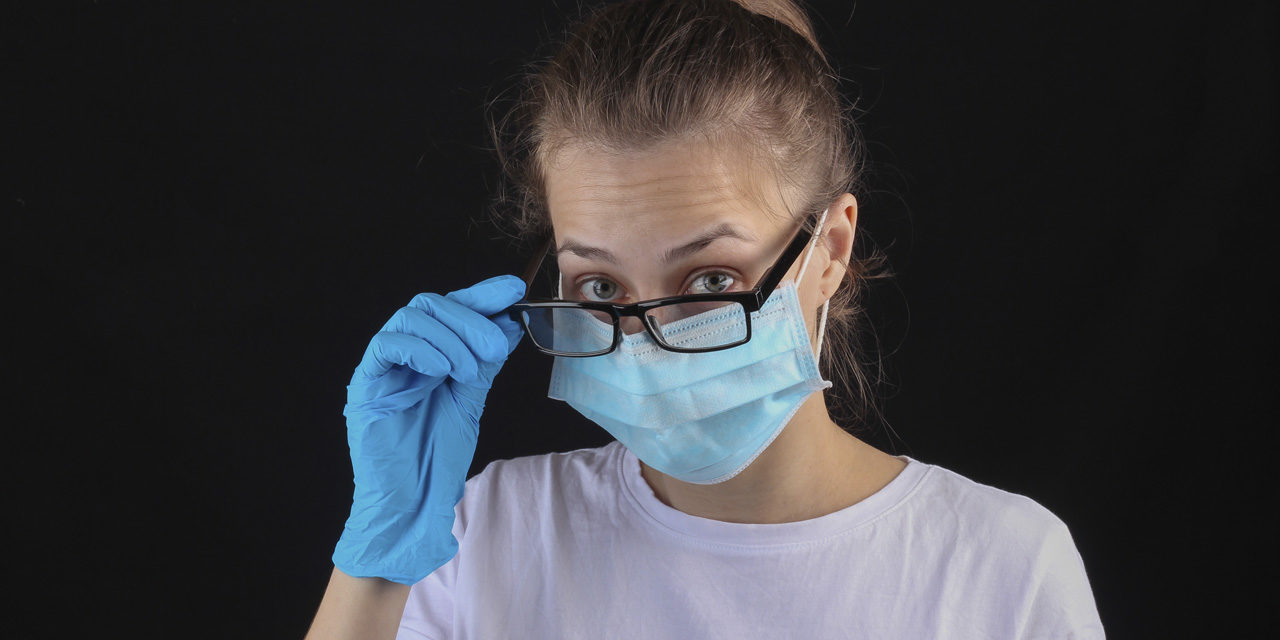Nothing more uncomfortable than combining glasses and a mask. This problem affects at least 23.6 million Spaniards who require some system to correct their vision, according to the Spanish Federation of Optical Sector Associations (FEDAO).
Foggy glasses when wearing a mask carry obvious health risks. In addition to limiting vision – a particularly dangerous disadvantage when crossing traffic lights or driving on the road – the fog from the windows offers a ‘refuge’ where SARS-CoV-2 can survive. In the case of those infected, this layer of humidity is a source of contagion, despite the fact that the Higher Council for Scientific Research (CSIC) stated that contagion by contact with water was “very unlikely”.
The annoyance of the glasses fogged up by the mask also favors the touching of the face. The need to remove this mist multiplies contact with clothing, objects in pockets and facial sections close to the frame, such as cheeks, nose and eyes.
Fogged glasses? Why it happens?
Fogged glasses have become a common thing during the Covid-19 health crisis. This problem lies in the mist of the exhalations, that is, the breath that rises through the upper part of the mask and stays in the lenses of the glasses; since the temperature of the same is lower, when being in contact with the external air, condensation occurs. The result? Foggy glasses.
But not all glasses are equally susceptible to fogging. Small frames are less of an obstacle to air circulation, experiencing less condensation. Acetate glasses, on the other hand, accumulate a greater amount of mist, due to the dimensions of their lenses and their proximity to the eye. The presence of certain accessories in your design, such as platelets, can reduce this problem.
How to prevent the glasses from fogging up with the mask?
Soap and water solution
Due to its moisturizing qualities, soap allows you to effectively combat mist. Cleaning the lenses with a solution of water and a soapy product prevents condensation on their surface, allowing water particles to slide off without accumulating.
Therefore, an excellent advice for using masks for people with glasses is to clean them beforehand with a cloth, previously soaped with a bar or with liquid soap. Afterwards, the lenses are rinsed and rubbed with the manufacturer’s tissue or similar.
Sprays and anti-fog treatments
Sprays, wipes and anti-fog products were present on the market before the coronavirus pandemic. And is that the condensation on the glasses is an added difficulty for surgeons, epidemiologists and other health professionals. Although their effectiveness is temporary, anti-fog sprays avoid this annoying problem for 5-10 hours, a more than enough margin, given the useful life of a mask (4-5 hours).
Hence, an excellent answer to how to make the glasses not fog up with the mask is the use of these anti-fog products, available for prescription lenses.
Wet tissues and handkerchiefs
Nothing is easier than placing a wet tissue under the hygienic mask than to prevent the glasses from fogging up, right? This simplistic remedy is, however, highly effective. Because the fabric acts as a barrier to the flow of air that rises above the mask and reaches the lenses of the glasses. It is recommended, however, that the fabric or scarf used is not too damp, since it could accelerate the humidification of the mask through sweat, cough drops and other secretions, thus reducing its useful life.
Tight-fitting masks on top
Another of the tricks so that the glasses do not fog up with the mask is to wrap it into the face as much as possible. A poorly fitted mask forms cavities and spaces in the upper part, which favors the contact of the mist from the exhalations with the lenses of the glasses. It is therefore advisable to spend a few minutes in front of the mirror to correctly place this safety element.
Glasses over the mask
It is true that small frame glasses reduce the problem of fogging on the lenses. Many users, however, prefer to use large plastic glasses for aesthetic or comfort reasons. In these cases, there is an effective trick, consisting of placing the glasses on the mask, exerting a slight pressure on the upper edge of the mask. Although simple, this practice is an interesting answer to how to avoid fogging up the glasses with the mask.
Adhesive above the mask
The use of tape and other similar adhesives can solve the problem of foggy glasses when wearing a mask. Applying a strip of adhesive between the bridge of the nose and the upper edge of the mask neutralizes the release of mist towards the lenses.
